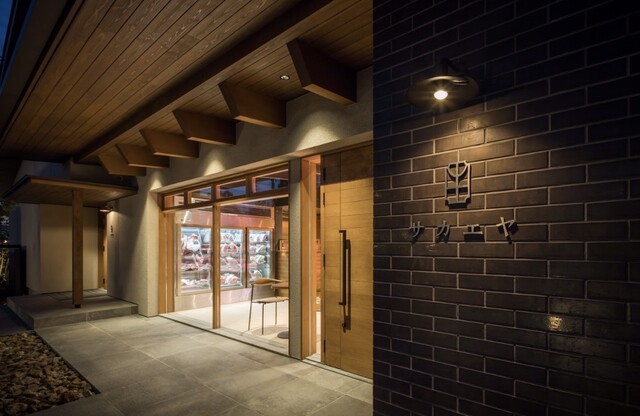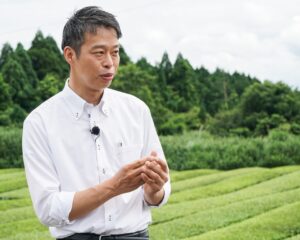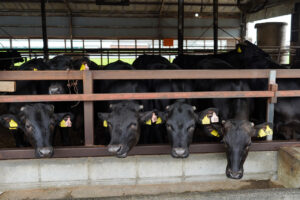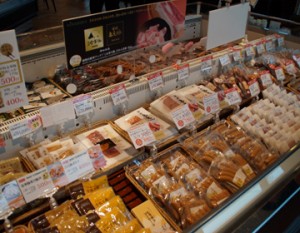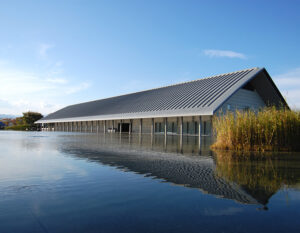Meat must be marbled, and A5 rank is supreme. These days may be coming to an end. Sakaeya purchases beef from cows that have given birth, low grade cows, and cows that are no longer in service, and then offers them to the world in the finest taste. Today, Sakaeya, a butcher store in Kusatsu City, Shiga Prefecture, is constantly visited by food connoisseurs and chefs from all over Japan.
A butcher store that ” treats ” meat and reborn it
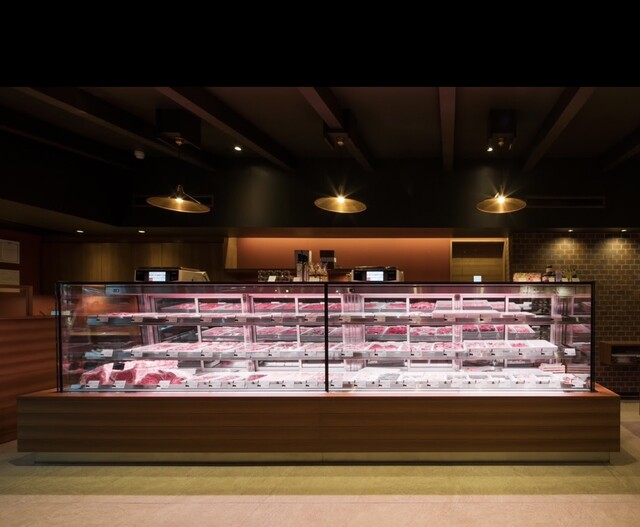
Omi beef is said to be the oldest brand of beef in Japan. In Shiga Prefecture, where Omi beef is produced, there is a butcher store that has attracted the attention of chefs and meat lovers nationwide. Sakaeya purchases carcasses with bones from the producers and sells them after “treating” them. Sakaeya is a butcher store, not a wholesaler. Therefore, they hang the carcasses they purchase from the producers, age them, and change the method of preservation depending on the individual, all in the belief that they bring out the maximum potential of the meat before selling it. The meat purchased by the owner’s discerning eye is then treated by artisans to make it even more delicious before being delivered to the consumer.
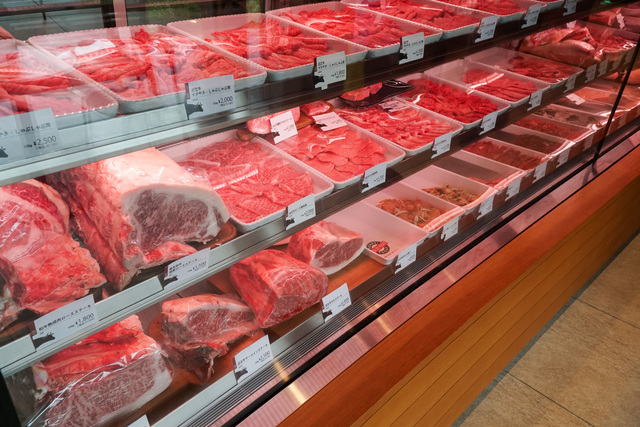
Showcase with 50 kinds of meat
When you open the door of the store, more than 50 kinds of meat are lined up in a showcase that fills your field of vision. At Sakaeya, it is common for each customer to be served for 20 to 30 minutes. Staff members always go to the front of the showcase and stand side by side to serve customers. Each staff member needs to have a wide range of knowledge because they listen to customers’ preferences and give them detailed advice on how to grill and cook the meat so that it can be enjoyed at home.
Some regular customers come once a month from Tokyo to order a month’s supply of meat, which is delivered on the 10th or 20th of the month, in the best possible condition at the time they want it, so many meat lovers in particular insist on coming here to buy their meat.
Made-to-order to suit the cook’s personality
The storefront aging room, which also serves as a display, is lined with powerful chunks of meat, accompanied by tags with the names of famous restaurants in Tokyo and other parts of Japan. All the meat sold to restaurants is custom-made for each restaurant. When he purchases a carcass with the bones attached, he instantly decides on a wholesaler for that restaurant and another for this restaurant, and tailors the meat to suit the individuality of the restaurant and chef.
I always purchase meat with the bone in and ship it with the bone out. For example, apples stay fresh when they are whole, but as soon as they are cut, they start to turn brown and oxidize. Meat is the same way. Once the bones are removed, that is when the oxidation begins. That is why I never ship meat to restaurants except with the bones. In order to provide the best meat, it is also important to know what the wholesaler thinks about the restaurant and the environment in which the meat is cooked. So in order to get to know each other well, I always have the chefs from the wholesaler visit here, and I also go to the wholesaler’s restaurant. I also take them to the ranch to see how the cows are raised. After repeating such exchanges several times, we start a relationship. The first step is to see if we can trust each other as human beings, and only after that do we start doing business. says Yoshinobu Niiho, the president of the company.
The High Barrier between Producers
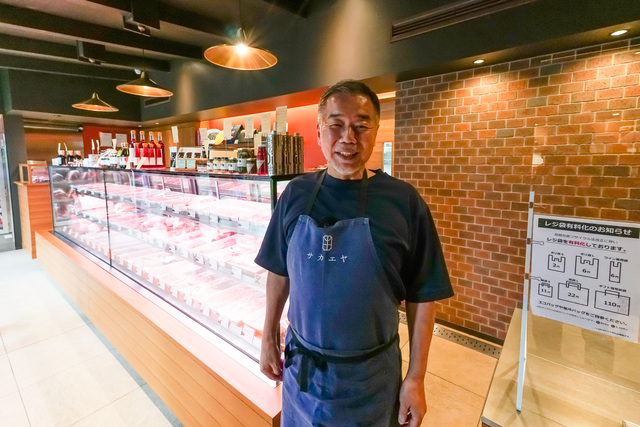
Mr. Shinbo entered the meat business at the age of 19, and at 27 became independent and opened “Omi Beef Specialty Restaurant Saekaeya” in Kusatsu City, Shiga Prefecture. Although by nature he is a person who gets bored easily, his fascination with meat led him to stay in the industry for as long as he could.
Then the BSE (Bovine Spongiform Encephalopathy) epidemic of 2001 changed his life forever. The lack of beef sales put him in a difficult position, and he wanted to know which ranches were raising what kind of cattle and what kind of bloodlines, so he visited each ranch one by one in Shiga Prefecture. At that time, producers and butchers rarely communicated directly with each other, and it was commonplace to not know who raised the meat when it arrived. It was common for the producer to have never eaten the meat he had raised, and there was a very high barrier between producers, butchers, restaurants, and customers. Hoping to change this situation as much as possible, we shot videos at every ranch we went to and uploaded them to our company website. The producers were pleased with the close-ups, and now they go to every region from Hokkaido to Okinawa, staying overnight in some cases, to purchase meat only from producers they feel they can trust.
Connecting Chefs and Producers
For chefs, butcher stores are often seen as “suppliers. I didn’t like the relationship between the meat we wholesale and the people who use it, and I wanted to turn that upside down,” says Shinbo. If producers, butchers, and restaurants do not work on an equal footing, the industry as a whole has no future. We are in a position to connect producers and chefs. By treating the meat and adding new value, we can buy more cattle from the producers and deliver delicious meat to the restaurants. Shinbo-san says that butcher stores that can create such a correct cycle will become more and more important in the future.
Breathing new life into meat through aging
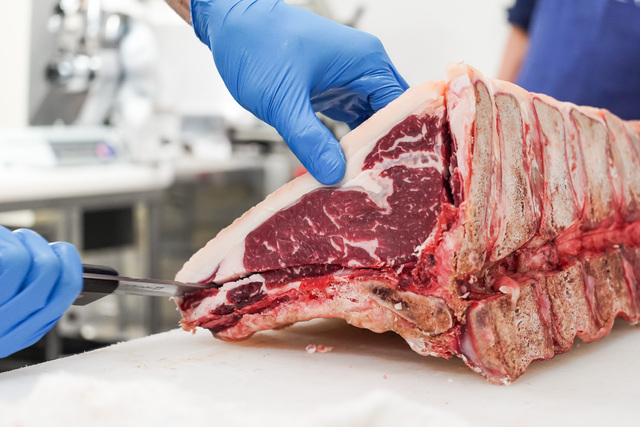
Sakaeya has four refrigerators with different humidity and temperature conditions. Meat purchased bone-in from trusted producers is hung in these refrigerators, and then aged to the flavor of each restaurant before being transported to restaurants around the country.
The key to successful aging is the creation of bacteria suited for aging. Sakaeya’s refrigerators store “seeds” of meat that have been transformed into fossils over the past 15 years. Bacteria generated from these “seeds” spread throughout the storehouse and promote the ripening of the meat. The bacteria that are there now are suitable for aging, so the meat does not spoil, but they had to work very hard to get here. Depending on the meat, some meat is ready in two weeks, while others are not ready even after 40 days. In the past, when no change occurred after 40 days, he thought the meat had not matured long enough, and when he checked on it for 50 or 60 days, it began to rot instead of maturing. It is not just a matter of removing water and controlling humidity and temperature; ripening is only possible when the bacteria are at work. The aging process is a matter of breathing life into the meat entrusted to us by the producer and treating it according to the needs of the chefs who will use it. It took 15 years to find the best fungus that can produce truly delicious aged meat.
Tenderizing hard aged beef
Mr. Shinbo’s start in the aged meat business was with beef that had been born to term. In the livestock industry, hard beef is generally considered unappealing, and young heifers are considered more tender and tasty. After their service has been completed, heifers are 50 to 70 years old in human terms. Most are emaciated and thin, with brittle bones and no meat. Shinbo’s job is to re-fatten them over a period of six months, and then age them to loosen the fibers and give them a deeper flavor and make them more palatable.
I thought, “In a cool way, if I don’t do that, where are these kids going to go?” I thought, ‘If I don’t do that, where are these kids going to go? They will probably only be made into pet food or processed products. It is unlikely that they will become products that will be distributed to the general public. However, the producers would appreciate it if they could distribute them, and by buying them at a slightly higher price, the producers could buy new calves. I believe this is the proper cycle.
But just letting the beef rest is not the only way to ripen it.
These days, you can find the words “aged meat” in many restaurants, but it is frustrating to hear people say, “I got sick to my stomach after eating aged meat,” or “I have had it before, but it was not delicious.
Shinbo’s method of aging is called ” dry aging,” in which the surface of the meat is dried to condense the flavor and aroma inside, but of course simply placing the meat in a refrigerator does not remove the moisture. Of course, simply leaving the meat in the refrigerator is not enough to remove the moisture. If I find something different, I move the meat to another refrigerator to change the environment.
Meat is also a living thing, so it is important to take good care of it. When the time is right, I immediately contact the chef and ask him to make the necessary arrangements to use the meat. So it is very important to keep in constant contact with the chefs. We also give feedback to the producers on the results of our work, and ask them to use the feedback as a reference for how they should raise their produce in the future. Through the repetition of this kind of collaboration, an environment has been cultivated in which truly valuable cured meat is produced.
Pursuit of “Delicious Meat

Mr. Shimpo says he likes to buy A2-grade beef and make it taste as good as A5. He says he wants to create a completely new value that is different from the rating grade. There are no producers who raise cattle to A3 grade from the beginning,” he says. But since cattle are raised together, some of them may not be able to grow large because they cannot get enough food. All producers are under pressure to raise their cattle to A5 or they won’t be able to sell them. Therefore, by buying A3 cattle at a high price, producers can raise their cattle with peace of mind. It’s a small effort, but I think the livestock industry will be enriched if such a circle expands.
The butcher store is hard work, with meat weighing more than 30 kilograms having to be lifted and processed. He is not sure how far he will be able to go in his current position, but on the other hand, he also wants to start from scratch again. Every day I make new discoveries,” he says, “and there are always new things I want to try. My pursuit is always ‘delicious meat. I want to make meat that impresses me more and more, but I haven’t reached that point yet,” says Shinbo. Perhaps there is a new world that lies ahead of us because we have been facing the meat and seeking better relationships with chefs and producers.
Restaurant “Sejir” where you can taste Sakaeya’s meat
Sakaeya has a restaurant called “Sejir” attached to its store. The idea of having a place like a laboratory in a corner of the butcher store where people can grill and sample meat they have treated themselves was the impetus for the creation of Sejir.
Sejir serves Italian cuisine with meat created at Sakaeya as the main ingredient. Pasta and soups are also served, but the main emphasis is on enjoying the flavor of the meat above all else. Although the restaurant has recently become known locally, most of the customers come from Tokyo and other urban areas, as well as from overseas. Many regular customers come once a month, order a month’s worth of meat, dine at the restaurant, and leave.
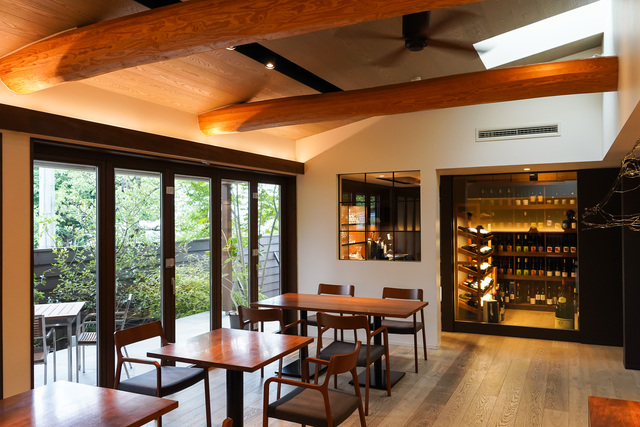
Raising the Bar in the Butchery Industry
The butcher’s job does not end with selling meat. According to Shinbo, his job is to sell meat that he truly believes is the right meat, and to have the customer smile and say “delicious” when the cooked meat enters his or her mouth. It is the same for producers and chefs. It is difficult to raise the level of the livestock industry unless everyone involved shares the same commitment.
To that end, I want to break down the high barriers that still exist between us. Even if it is difficult for my generation, at least I want to leave an open environment for the next generation. We would like to focus on the future that Mr. Shimpo is aiming for, and the future of Wagyu, the pride of Japan.
